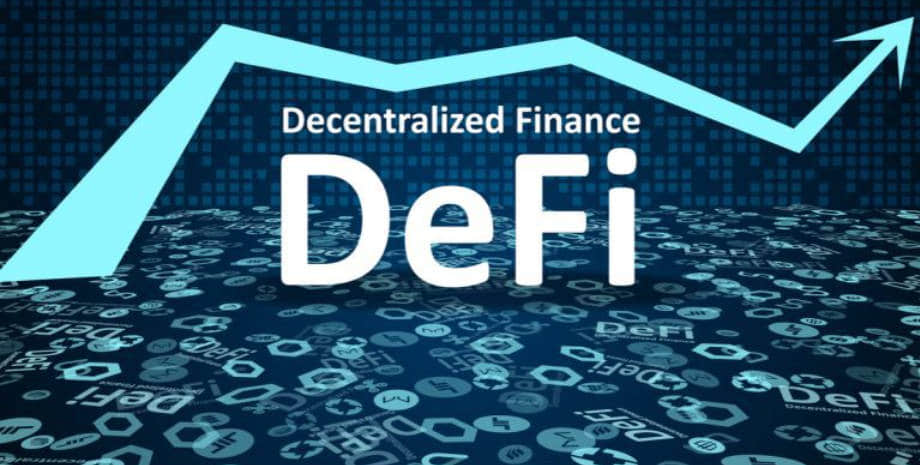What happened to the former DeFi star protocol Olympus DAO, with a drop of over a hundred times?
Uncovering the Fate of Olympus DAO, the Once-Promising DeFi Protocol with a Devastating Hundred-Fold DropHe built a red house, invited guests, and then watched it collapse.
-“The Peach Blossom Fan”
Go2Mars has two hobbies when it comes to research. The first is to search for early-stage alpha projects with high potential, and identify their unique innovative points. This is for learning. The second is to find those outdated projects that experienced a rise and fall in Total Value Locked (TVL), and analyze how they went from “building a tall house” to “inviting guests” and finally to “house collapse”. This is for reflection.

- HECO Chain Bridge Exploit: HTX Loses Millions and Investors Hold Their Breath
- Pancakeswap Votes for Progress Introducing ‘Gauges’ and Bid Farewell to vCAKE
- LianGuaiWeb3.0 Daily | Settlement between the US Department of Justice and Binance paves the way for ETF
Today, we are going to talk about this guest named Olympus DAO. Although its coin price has not reached zero, compared to its peak of over $1000U in 2021, it still seems a bit down and out. With its TVL rising and falling by a hundredfold, what made it glorious, and what caused its downfall?
Listen to me unfold the story slowly~
Preface
When delving into Olympus DAO and its native token OHM, a key perspective is understanding the underlying mechanisms and how they have influenced the token’s historical fluctuations. OHM’s market performance, from its initial rapid appreciation to its subsequent collapse, reveals its unique economic structure in a dynamic market. This article focuses on exploring the core mechanisms of Olympus DAO, including its staking, rebase, and Bonding strategies. Through analysis, we can gain a more comprehensive understanding of how Olympus DAO operates and the challenges and opportunities faced by similar protocols in the crypto market.
Project Introduction

OHM is the native token of the Olympus protocol, and its purpose is to become a stable reserve currency. We can think of OHM as an algorithmic unstab
Staking and Rebase
The Rebase mechanism theoretically adjusts the value of tokens by automatically increasing or decreasing the supply. When used in conjunction with Staking, Rebase rewards are typically allocated to Staking users. This means that even if the total token supply increases, the circulating supply may not necessarily increase as most of the newly added supply is distributed to staked users.
For OlympusDAO, users stake their OHM tokens in the protocol to earn sOHM and receive “rebase rewards” through Staking. If the market value of OHM is higher than the target value, the Rebase mechanism increases the quantity of OHM and distributes these additional OHM to Staking participants. The APY (Annual Percentage Yield) of these rewards has reached over 8000% at times. The source of these rewards is closely related to Bonding.
When bonds are sold, according to the protocol, each OHM requires only one DAI for backing. The amount of DAI paid by the buyers, minus the OHM tokens issued to them, is considered as income for the protocol. When this income is generated, new OHM tokens are minted based on that income, and the protocol distributes these newly minted OHM tokens to stakers. For example, if $100 DAI can buy a stablecoin with a market value of $105, the protocol will gain $99 in reserve to mint 99 OHM tokens and distribute them to the stakers. This mechanism aims to protect stakers from dilution effects caused by bond issuances and serves as the main value accumulation and anti-dilution strategy of Olympus DAO. It also means that the protocol provides and controls a significant portion of liquidity in the market.
Project Analysis: Soul-searching Questions about Olympus DAO
Why can the price of OHM, backed by only 1 DAI, soar to over $1400?
Looking at the simplest logic, a large-scale sell-off of a currency will cause its price to decline, while strong demand will cause it to appreciate relative to other currencies. From the perspective of Bonding and Staking mechanisms, neither of them involves selling actions. Even the Rebase mechanism, theoretically capable of increasing the supply of OHM and subsequently devaluing it, becomes a reward for Staking. Since there is no one selling, it does not have much impact on the price. Instead, more and more people join the Staking game of the protocol due to the crazy APY provided by Staking, creating significant demand for OHM and driving the price up. Additionally, the marketing strategy based on (3,3) game theory during the rise of OHM also made Staking a natural choice for investors, further boosting the price.
What leads to the collapse of OHM?
1. Unsustainable extremely high APY and selling pressure.
High APY naturally attracts capital, but it also brings inflationary pressures. Once the market sentiment changes or the protocol’s sustainability is questioned, funds can flow out, leading to a collapse. Massive sell-offs cause a significant drop in the OHM price, and based on market experience, it is difficult for algorithmic coins that have hit bottom from their peak without an entity pushing the price up to return to their original level.
2. Revised Game Theory for Olympus
Although there are many assumptions behind the game matrix presented by Olympus, we can still see some clues by simply modifying its parameters under unchanged assumptions. If the people who engage in bonding do not participate in staking, theoretically stakers will gain more shares. In such a scenario, it is easy to obtain different answers from the official ones:

When equilibrium is no longer staking, investors reduce or stop pledging OHM, causing a decrease in the total amount of staked tokens in the protocol. When investors withdraw from staking, the pledged OHM will return to the market, increasing the circulating supply. This may exert downward pressure on the price of OHM. At the same time, if a large number of investors choose to exit staking, it may be interpreted by the market as a bearish signal for the future of OHM, thereby influencing the behavior of other investors.
Summary
For protocols that are similar to Olympus DAO and operate like Ponzi schemes, short-term success generally includes the following strategies:
1. Providing high APY: This attracts a large amount of capital participation, providing initial funding momentum for the protocol.
2. Effectively preventing selling pressure through relevant mechanisms: Taking OlympusDAO as an example, staking reduces the circulating supply of tokens in the market by locking assets in exchange for high returns. At the same time, bonding decreases selling pressure in the market by extending the fund release cycle.
For participants looking to profit from such protocols, strategies may include:
1. Joining early in the protocol’s launch: Identify the potential and risks of the project and participate early to seek higher returns.
2. Capitalizing on market volatility: Buy at low price points, but be cautious as this comes with higher risks, especially the uncertainty associated with the behavior of big players.
In conclusion, the success of such protocols depends on their ability to balance attracting investors with high return promises and maintaining long-term sustainability. Participants should carefully evaluate the potential risks and rewards when getting involved in such projects.
We will continue to update Blocking; if you have any questions or suggestions, please contact us!
Was this article helpful?
93 out of 132 found this helpful
Related articles
- Bridging the Gap: Circle’s New Standard for Launching USDC
- De.Fi 2.0 Disrupting SocialFi & Reinventing Antivirus, Locks In $5 Million in Funding!
- Price reaching nearly a 15-month high, deciphering the logic behind the rise of Synthetix token
- IOSG AW and Full-Chain Game Engine Narrative – What Will Dojo and Mud Bring?
- Crypto Startups: Less Funding, More Impressive Moves!
- Four Valuation Drivers of Cryptocurrency Projects and the Dragon Ball Model
- Don’t Get Rekt! dYdX Ups Margin Requirements and Puts the Kibosh on Highly Profitable Trades





